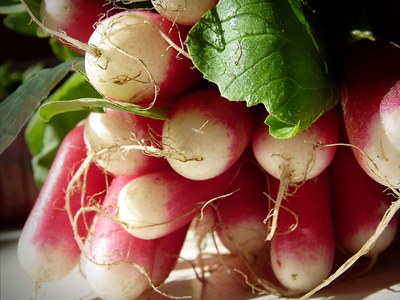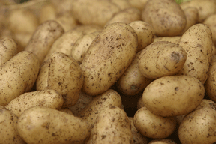Fall Vegetable Gardening

It’s hard to believe that July will arrive this week. I am not sure where the summer has gone so far, but it doesn’t look like it will slow down anytime soon. While our warm-season crops are thriving and loving the summer heat, it’s time for our cool-season crops to start winding down for the summer. As quickly as the summer is going, it’s time to start thinking about starting our fall garden plants, and even start planting some of them right now. Fall gardening wasn't an option when I lived in North Dakota, as the growing season was simply too short. In Kansas, fall gardening is an excellent but often overlooked gardening season. In some cases, by the time fall arrives, we are tired of being in the garden, but late-season crops can extend your gardening season and provide fresh veggies to winter, depending on the crop. In many cases, fall-grown vegetables are of higher quality and better for preservation.
Most of our cool-season vegetables can easily be grown in the fall, except for peas, as they require cooler temperatures to germinate than we get in July or August. Some common vegetables grown in the fall include potatoes, green beans, beets, cabbage, broccoli, cauliflower, carrots, kale, lettuce, radish, and spinach. Some crops, such as kale and spinach, can often be overwintered by only harvesting the outside leaves and mulching the plant in the garden. Most vegetables can be started from seed; however, vegetables such as broccoli, cauliflower, or cabbage should be started in containers or in a shady spot in the garden to be transplanted in mid-August. When seeding fall crops, plant the seeds slightly deeper than you would in the spring and water them consistently to help keep the soil as cool as possible.
The timing of planting fall vegetables can be critical to their success. Because of the warm soil temperatures, seedlings will often germinate faster in the summer than in the spring. Here is a brief calendar:
- Mid-July- Start planting potatoes. It’s best to use fresh seed potatoes rather than trying to plant the potatoes you just harvested. They have a dormancy requirement and won’t sprout soon enough. Finding seed potatoes in July can be hard, so you might have to order them.
- Late July- seed your longer-season, heat-tolerant crops such as carrots, beets, and green beans.
- Late July-Early August- seed spinach and longer season head lettuce. (Leaf lettuce will be started later in the fall.)
- Early August- Transplant broccoli, cabbage, and cauliflower seedlings into the garden.
- Mid to Late August- Start radishes and leaf lettuce.
Establishing fall crops might be the most challenging part of gardening in the late summer to early fall. Extra watering or heavy rainfall can form a crust on the top of the soil. Use a soaker hose to prevent the crust from building up if possible. You can also sprinkle compost, peat moss, perlite, or vermiculite over the top of the rows to prevent the crusting from occurring. Gradually reduce your watering as the seedlings grow to encourage a deeper root system. The vegetables will likely require some fertilizer two to four weeks after they have been planted or transplanted. It’s best to wait for fertilizer after the seedlings grow, so you don’t burn them when they are young.
Extra watering or heavy rainfall can form a crust on the top of the soil. Use a soaker hose to prevent the crust from building up if possible. You can also sprinkle compost, peat moss, perlite, or vermiculite over the top of the rows to prevent the crusting from occurring. Gradually reduce your watering as the seedlings grow to encourage a deeper root system. The vegetables will likely require some fertilizer two to four weeks after they have been planted or transplanted. It’s best to wait for fertilizer after the seedlings grow, so you don’t burn them when they are young.
Fall vegetable gardens can be an excellent extension of your gardening season. The cooler weather as the vegetables mature leads to tastier and higher quality vegetables than those that ripen in the heat of the summer. With just a little work, you can easily enjoy fresh vegetables throughout the growing year and even into the early to mid-winter. I hope your gardens and plants are looking great.

Have questions? Contact our office where our Horticulture Extension Agent will assist you with questions.
Phone: (316) 321-9660
Email: callae@ksu.edu